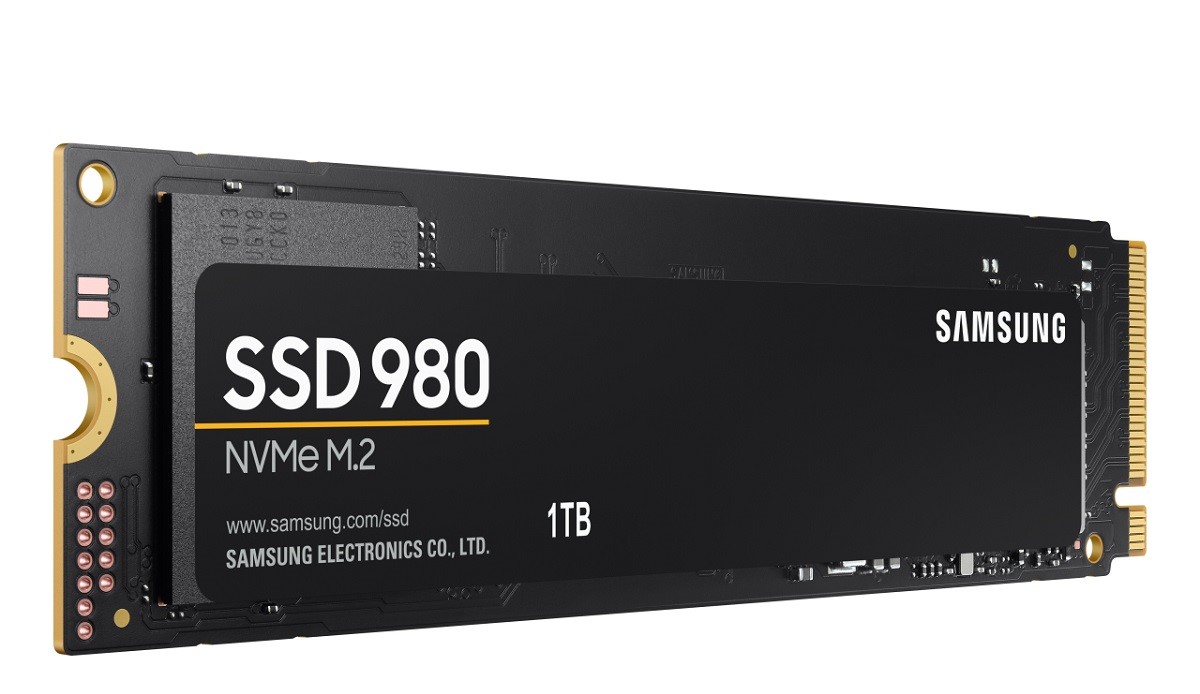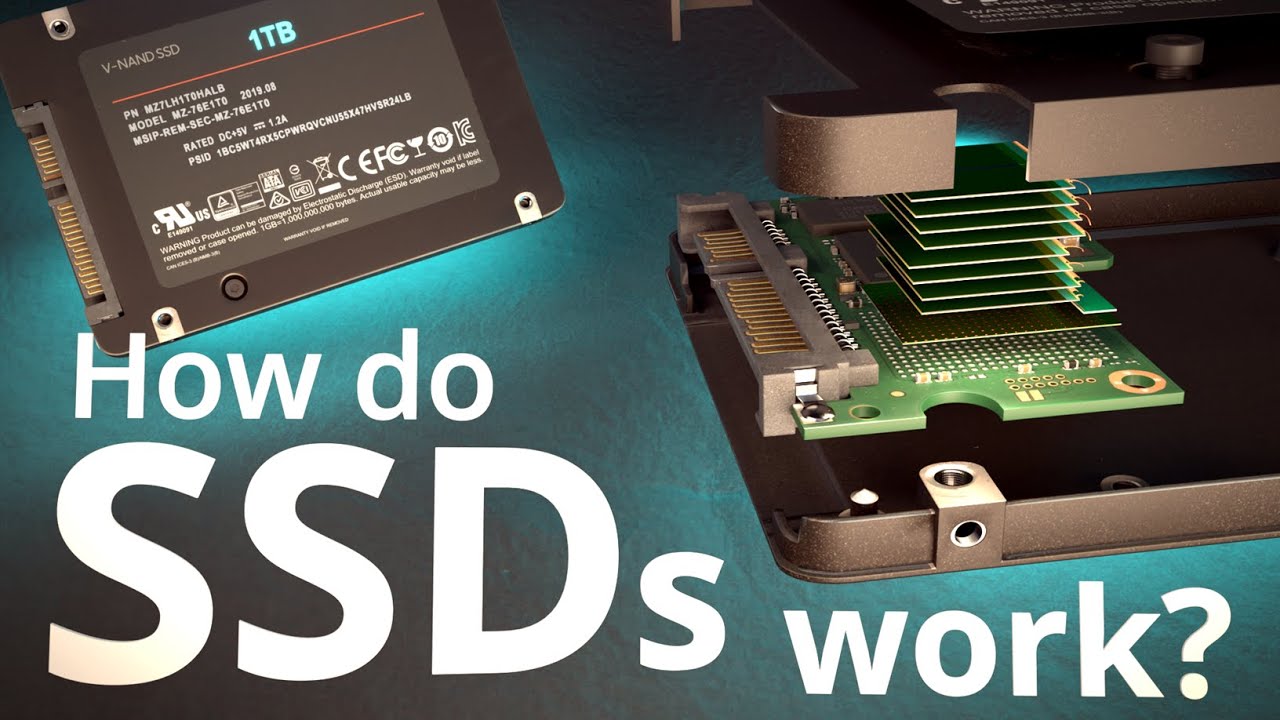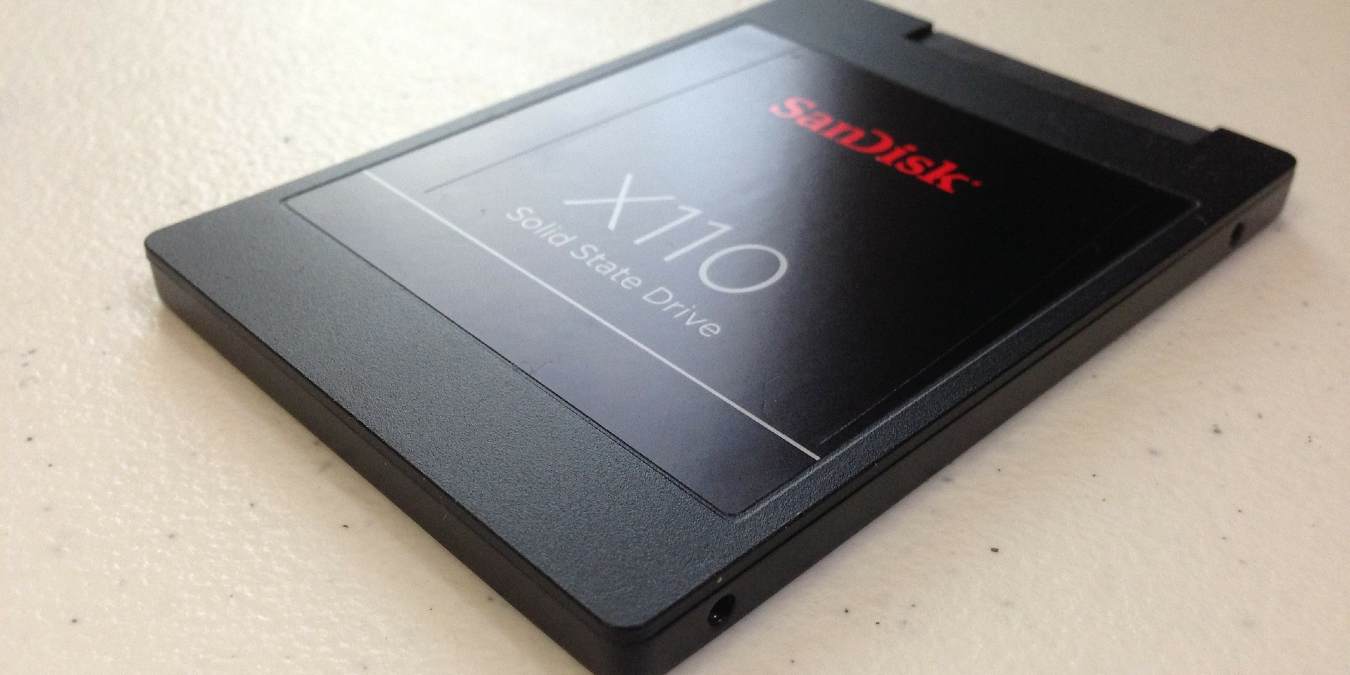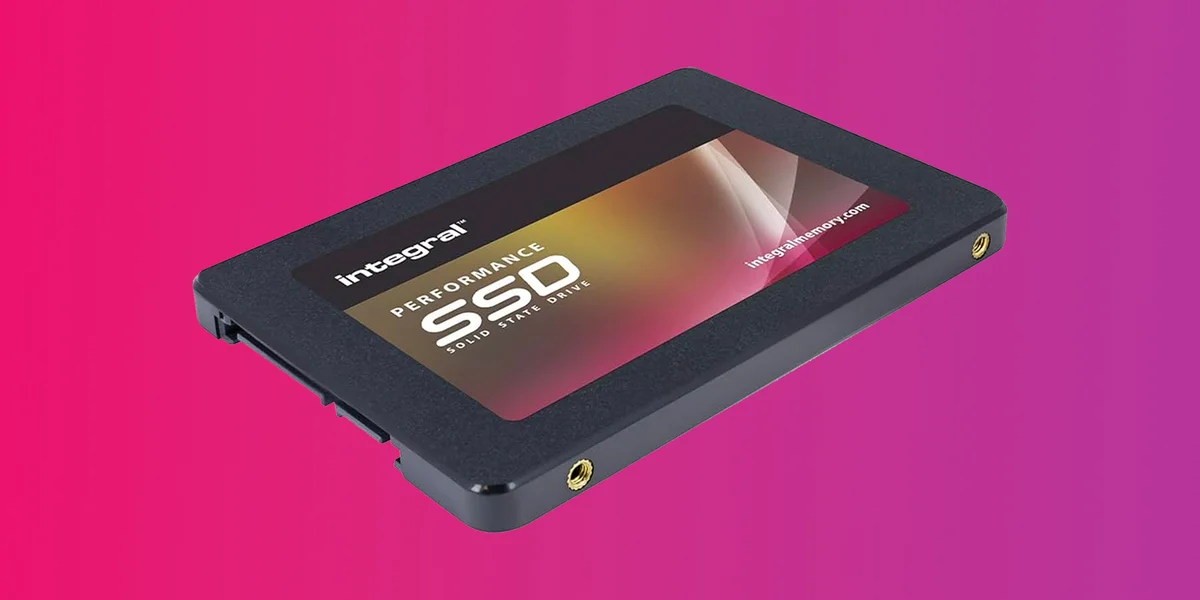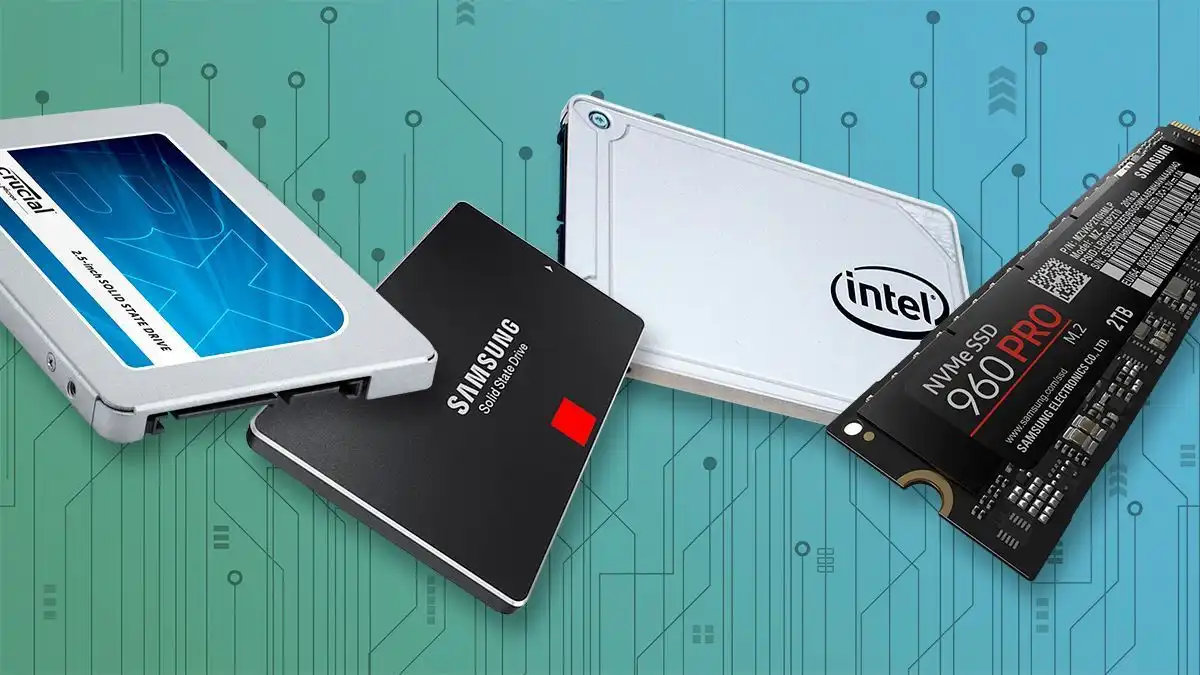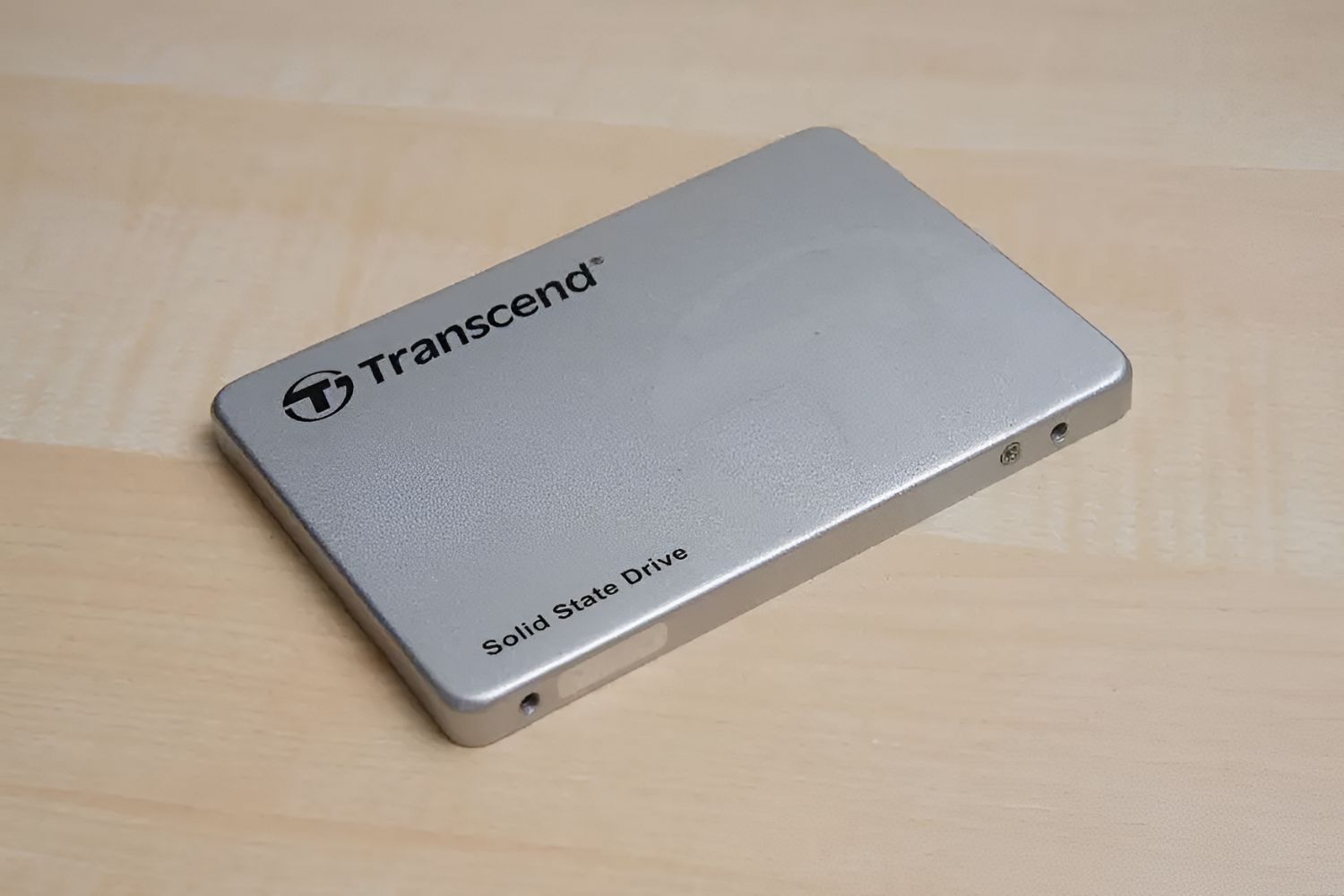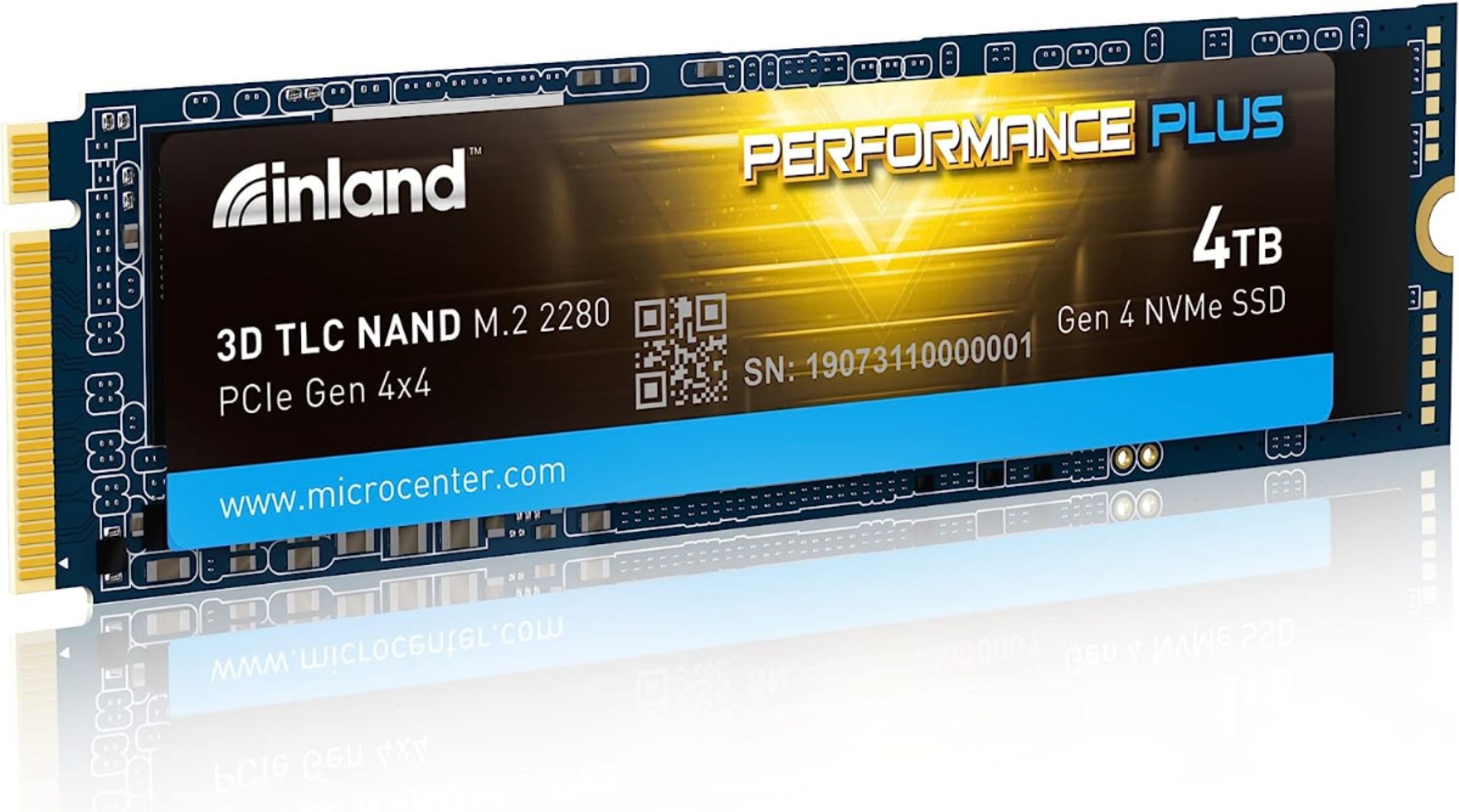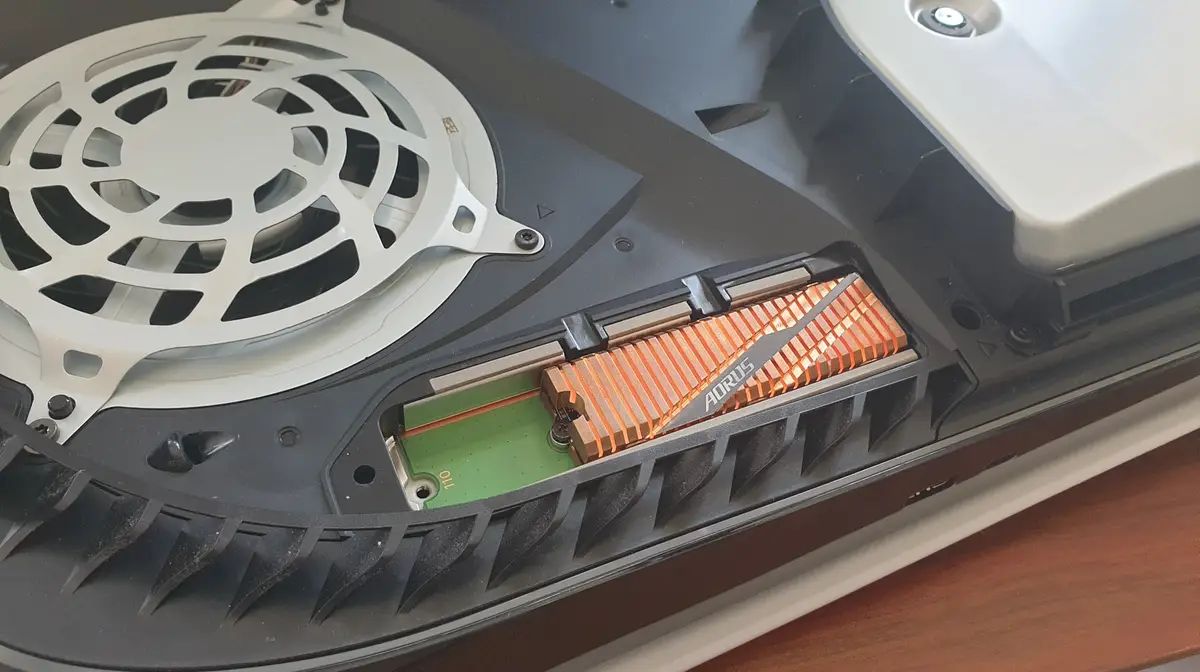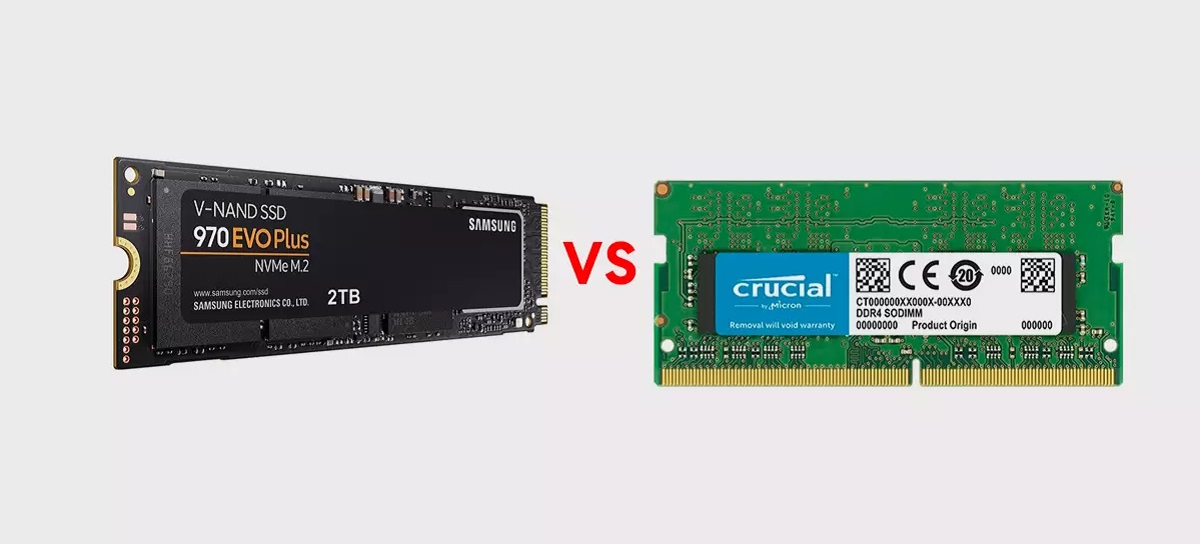Introduction
Welcome to our guide on Dram Less SSDs! In today’s digital age, solid-state drives (SSDs) have become the go-to choice for storage due to their superior speed and reliability. However, within the realm of SSDs, there are different variations, one of which is the Dram Less SSD. In this article, we will delve into the world of Dram Less SSDs and explore what sets them apart from traditional SSDs with DRAM caches.
Before we dive into the specifics of Dram Less SSDs, let’s quickly refresh our memory on what SSDs are. Solid-state drives use flash memory to store data, unlike traditional hard disk drives (HDDs) that rely on spinning disks. This eliminates the need for mechanical components and results in faster access times and improved durability.
A Dram Less SSD, as the name suggests, lacks a dedicated Dynamic Random Access Memory (DRAM) cache. In traditional SSDs, the DRAM cache serves as a temporary and faster storage area, allowing for efficient reading and writing of data. However, Dram Less SSDs take a different approach by relying solely on the NAND flash memory, without the inclusion of a separate DRAM cache.
Now that we have a basic understanding of Dram Less SSDs, let’s explore how they operate and what sets them apart from their counterparts with DRAM caches. By examining the advantages and disadvantages of Dram Less SSDs, we can better understand their use cases and determine if they’re the right choice for your storage needs.
Definition of Dram Less SSD
A Dram Less SSD is a type of solid-state drive that operates without a dedicated Dynamic Random Access Memory (DRAM) cache. The DRAM cache is a temporary storage area in traditional SSDs that aids in the efficient and speedy reading and writing of data. However, Dram Less SSDs eliminate the need for this cache and rely solely on the NAND flash memory for data storage and retrieval.
Without a DRAM cache, Dram Less SSDs utilize other techniques to compensate for the lack of cache. One such technique is the use of Host Memory Buffer (HMB) technology, which allows the SSD to utilize a portion of the system’s main memory as a buffer. By utilizing the system memory, Dram Less SSDs can still achieve reasonable performance levels.
Another technique employed by Dram Less SSDs is the use of advanced algorithms and optimizations within the SSD controller. These algorithms help to enhance the efficiency of data access and improve the overall performance of the drive. By intelligently managing read and write operations, Dram Less SSDs can minimize latency and deliver respectable speeds.
It is important to note that Dram Less SSDs are typically found in entry-level or budget-friendly SSDs. They provide a cost-effective storage solution for those who prioritize affordability over maximum performance. As technology advances, however, Dram Less SSDs are improving in their capabilities, and their performance is becoming more competitive with SSDs that have DRAM caches.
Dram Less SSDs are available in various form factors, including the common 2.5-inch SATA form factor, M.2 form factor, and even PCIe-based SSDs. This allows for compatibility with a wide range of devices, including desktop computers, laptops, gaming consoles, and more.
In the next section, we will explore how Dram Less SSDs work and the specific mechanisms they use to deliver efficient storage performance, despite the absence of a DRAM cache.
How Dram Less SSD Works
While Dram Less SSDs operate without a dedicated DRAM cache, they employ various techniques to ensure efficient storage performance. Let’s take a closer look at how these SSDs work.
One of the key methods used by Dram Less SSDs is the utilization of Host Memory Buffer (HMB) technology. HMB allows the SSD to access a portion of the system’s main memory as a buffer, compensating for the lack of a dedicated DRAM cache. By leveraging the system memory, Dram Less SSDs can store frequently accessed data and reduce the need for constant read and write operations to the NAND flash memory.
Additionally, Dram Less SSDs employ advanced algorithms and optimizations within the SSD controller. These algorithms help to manage data storage, retrieval, and cache-like functions to improve overall performance. Techniques such as wear leveling, garbage collection, and error correction are used to enhance endurance, reliability, and data integrity.
Furthermore, some Dram Less SSDs utilize SLC (Single-Level Cell) caching. SLC caching reserves a portion of the NAND flash memory to emulate the higher performance and endurance of SLC flash. This caching technique improves the SSD’s write speed, allowing for faster and more efficient data transfers.
Another mechanism employed by Dram Less SSDs is the utilization of Intelligent Caching. This intelligent algorithm identifies frequently accessed data and stores it in a separate cache layer, similar to what a DRAM cache would do. By prioritizing commonly accessed data, the SSD can reduce latency and improve overall responsiveness.
It’s worth mentioning that, although Dram Less SSDs may provide adequate performance for everyday computing tasks, they may face performance degradation during sustained workloads or when dealing with large datasets that exceed the available system memory buffer. In these scenarios, SSDs with dedicated DRAM caches typically offer better sustained performance.
In the next section, we will explore the advantages and disadvantages of Dram Less SSDs in more detail, allowing you to weigh the pros and cons before considering these drives for your specific needs.
Advantages of Dram Less SSD
Dram Less SSDs offer several advantages that make them a viable choice for certain applications. Let’s explore some of the benefits these SSDs provide:
1. Affordability: One of the major advantages of Dram Less SSDs is their cost-effectiveness. By eliminating the need for a dedicated DRAM cache, these SSDs can be produced at a lower cost, making them more affordable for budget-conscious users.
2. Energy Efficiency: Dram Less SSDs generally consume less power compared to SSDs with DRAM caches. The absence of a power-hungry DRAM cache means lower power requirements, which can contribute to longer battery life in laptops and reduced energy consumption in desktop systems.
3. Compact Form Factor: Dram Less SSDs are available in various form factors, including the compact M.2 form factor. This allows for easy integration into ultra-thin laptops, small form factor PCs, and other space-constrained devices.
4. Reliability: With fewer components, Dram Less SSDs can offer improved reliability. The absence of a DRAM cache eliminates potential points of failure, reducing the risk of data loss and increasing the overall lifespan of the drive.
5. No DRAM Cache Limitations: While Dram Less SSDs may not provide the same level of performance as SSDs with DRAM caches, they are not bound by the limitations of cache size. This allows for consistent performance across different capacities, ensuring that users can benefit from optimal speed regardless of the storage capacity they choose.
6. Improved Sequential Read Performance: Dram Less SSDs can often achieve competitive sequential read speeds due to advancements in SSD controller technology. This makes them suitable for tasks that involve large file transfers and media streaming.
7. Compatibility: Dram Less SSDs are compatible with various operating systems and can be used in a range of devices, including laptops, desktops, gaming consoles, and external storage solutions.
While Dram Less SSDs may not provide the same level of performance as SSDs with DRAM caches, they offer a cost-effective storage solution that can meet the needs of casual users, mainstream computing, and certain workloads. It’s essential to carefully consider your specific requirements and the intended usage scenario before selecting a Dram Less SSD for your system.
In the next section, we will explore the disadvantages of Dram Less SSDs, offering a well-rounded understanding of their limitations and trade-offs.
Disadvantages of Dram Less SSD
While Dram Less SSDs offer cost-effective storage, they also come with certain disadvantages that should be taken into consideration. Let’s explore some of the limitations and trade-offs associated with Dram Less SSDs:
1. Lower Random Read and Write Performance: The absence of a dedicated DRAM cache in Dram Less SSDs can result in lower random read and write speeds, especially when dealing with small file transfers or multitasking scenarios. This can lead to slightly slower response times and decreased overall performance in certain workloads.
2. Limited Sustained Performance: Dram Less SSDs may experience performance degradation during sustained workloads. Without a DRAM cache to store and prefetch data, these SSDs may struggle to maintain high-speed performance over extended periods. This can impact tasks that involve continuous data transfers or heavy multitasking.
3. Reduced Endurance: Dram Less SSDs typically have lower endurance compared to SSDs with DRAM caches. The absence of a cache means that the NAND flash memory could be subject to more write operations, potentially reducing the SSD’s lifespan. However, it’s worth noting that advancements in NAND technology have improved endurance levels across SSDs in general.
4. Higher Latency: Dram Less SSDs may exhibit higher latency compared to SSDs with DRAM caches. The lack of a dedicated cache for caching frequently accessed data can result in slightly longer access times, leading to a small increase in latency.
5. Limited Performance with Large Datasets: When dealing with large datasets that exceed the available system memory buffer, Dram Less SSDs may struggle to maintain optimal performance. Since they lack a dedicated DRAM cache, transferring and managing large amounts of data can become a bottleneck, leading to reduced overall performance.
6. Limited Compatibility with Specific Applications: Certain applications that demand high-speed performance, such as complex video editing or data analysis software, may require the higher speeds and responsiveness provided by SSDs with DRAM caches. Dram Less SSDs may not be the ideal choice for these specialized applications.
It’s important to weigh these limitations against your specific requirements and usage scenarios. If you prioritize affordability and basic storage needs over high-performance demands, Dram Less SSDs can still deliver satisfactory performance in everyday computing tasks and general usage scenarios.
In the next section, we will compare Dram Less SSDs with SSDs that feature dedicated DRAM caches, allowing you to understand the differences and make an informed decision based on your needs.
Comparison between Dram Less SSD and SSD with DRAM
When selecting a solid-state drive (SSD), you have the option to choose between a Dram Less SSD and an SSD with a dedicated DRAM cache. Understanding the differences between these two options is crucial in making an informed decision. Let’s compare these two types of SSDs based on various factors:
1. Performance: SSDs with DRAM caches generally offer superior random read and write performance, as the cache allows for faster access to frequently accessed data. On the other hand, Dram Less SSDs may experience lower random read and write speeds, particularly in multitasking scenarios or when dealing with small file transfers.
2. Sustained Performance: SSDs with DRAM caches tend to have better sustained performance over extended periods compared to Dram Less SSDs. The dedicated cache improves caching and prefetching mechanisms, resulting in consistent high-speed performance in demanding workloads.
3. Cost: Dram Less SSDs are typically more affordable than their counterparts with DRAM caches. By eliminating the need for a dedicated cache, manufacturers can produce and sell Dram Less SSDs at a lower price point, making them a cost-effective storage option for budget-conscious users.
4. Endurance: SSDs with DRAM caches often have higher endurance levels compared to Dram Less SSDs. The inclusion of a cache reduces the number of write operations directly to the NAND flash memory, prolonging the overall lifespan of the SSD.
5. Responsiveness: SSDs with DRAM caches generally exhibit lower latency and faster response times, resulting in a more responsive computing experience. Dram Less SSDs may have slightly higher latency due to the absence of a dedicated cache for frequently accessed data.
6. Compatibility: Both Dram Less SSDs and SSDs with DRAM caches are compatible with various operating systems and devices. They are available in multiple form factors, allowing for seamless integration into laptops, desktops, and other compatible devices.
7. Use Cases: Dram Less SSDs are well-suited for everyday computing tasks, such as web browsing, document editing, and media playback. They provide a reliable and cost-effective storage solution. On the other hand, SSDs with DRAM caches are better suited for tasks that require high-performance storage, such as gaming, content creation, and data-intensive applications.
Ultimately, the choice between a Dram Less SSD and an SSD with DRAM depends on your specific needs and budget. If you require the utmost performance and faster response times, SSDs with DRAM caches are the preferred choice. However, if affordability and basic storage needs are your priority, Dram Less SSDs can provide a satisfactory solution.
In the next section, we will explore the use cases where Dram Less SSDs can be a suitable option, helping you determine if they align with your storage requirements.
Use Cases for Dram Less SSD
Dram Less SSDs, despite their limitations in terms of performance compared to SSDs with DRAM caches, can still serve as a suitable storage option for various use cases. Let’s explore some scenarios where Dram Less SSDs can be a viable choice:
1. General Computing: For everyday computing tasks like web browsing, email, document editing, and casual media consumption, Dram Less SSDs provide sufficient performance. They offer faster boot times, quick application launches, and overall snappy system responsiveness.
2. Basic Gaming: Dram Less SSDs can still enhance the gaming experience for casual gamers. They provide faster loading times for games and help reduce in-game stutters and lags, improving the overall gameplay experience.
3. Office Productivity: Dram Less SSDs are well-suited for office environments where users primarily work with productivity suites like Microsoft Office, Google Docs, or other similar applications. The SSDs’ quick access to files and documents ensures smooth multitasking and efficient workflow.
4. Media Storage and Playback: Dram Less SSDs can reliably store and play back high-definition media files, including videos, photos, and music. With their improved sequential read performance, these drives can handle large media files and deliver smooth streaming and playback experiences.
5. Light Content Creation: For amateur content creators who work with basic image editing, video editing, or graphic design software, Dram Less SSDs can provide adequate storage performance. While they may not be as fast as SSDs with DRAM caches, they can still handle light content creation tasks effectively.
6. Budget-Friendly Builds: Dram Less SSDs are an attractive option for budget-conscious users or those building entry-level systems. They offer a cost-effective storage solution without compromising essential performance, making them suitable for budget-friendly PC builds or upgrades.
It’s important to consider the specific requirements and usage scenarios when evaluating whether a Dram Less SSD is the right choice. If the tasks you primarily perform fall within the aforementioned categories and you prioritize cost-effectiveness, a Dram Less SSD can offer a satisfactory storage solution.
In the final section, we will provide some concluding thoughts and help you determine if a Dram Less SSD is the right choice for your storage needs.
Is Dram Less SSD Right for You?
Choosing the right SSD for your storage needs requires careful consideration of various factors. When it comes to Dram Less SSDs, there are certain aspects to weigh before deciding if they are the right choice for you:
1. Performance Requirements: Assess your performance needs and determine whether the slightly lower performance of Dram Less SSDs will suffice for your usage. If you require maximum performance for demanding tasks like intensive gaming, video editing, or data analysis, an SSD with a dedicated DRAM cache may be more suitable.
2. Budget Constraints: Consider your budget. If affordability is a primary concern, Dram Less SSDs offer a cost-effective storage solution without compromising basic performance. They provide a reliable and affordable option for everyday computing tasks.
3. Intended Use: Evaluate the specific tasks you plan to perform. If you primarily use your system for web browsing, document editing, media playback, or general office productivity, Dram Less SSDs can deliver satisfactory performance for these use cases.
4. Capacity Requirement: Determine the amount of storage capacity you need. Dram Less SSDs are available in various capacities, offering flexibility to choose the right size for your requirements.
5. Endurance Expectations: Consider the expected lifespan of your SSD. While Dram Less SSDs may have slightly lower endurance compared to SSDs with DRAM caches, advancements in NAND technology have improved the overall endurance of all SSDs, making them more durable and reliable.
6. Future Upgradability: If upgradability is important to you, ensure that your chosen system supports additional storage options or upgrades. This way, you can expand your storage capacity or opt for a different SSD with DRAM cache in the future if needed.
Ultimately, the decision of whether a Dram Less SSD is right for you depends on your specific requirements, budget, and intended usage. If you prioritize affordability, basic performance, and everyday computing tasks, a Dram Less SSD can be a suitable choice.
Before making your final decision, it’s advisable to research and compare different SSD options, read reviews, and consider professional opinions to ensure that you select the SSD that best aligns with your needs and provides optimal performance for your intended use.
With the information provided in this guide, you are now equipped to make an informed decision on whether a Dram Less SSD is the right fit for your storage needs.
Conclusion
Choosing the right SSD for your storage needs is a crucial decision that can greatly impact your system’s performance and overall user experience. Dram Less SSDs offer a cost-effective storage solution for budget-conscious users or those with basic computing requirements. While they may not match the performance levels of SSDs with dedicated DRAM caches, Dram Less SSDs provide adequate speed and reliability for everyday computing tasks, general office productivity, and light gaming.
It’s important to consider your specific needs, budget constraints, and intended usage scenarios when determining if a Dram Less SSD is the right choice for you. If affordability, reliability, and basic performance are your primary concerns, Dram Less SSDs can offer a satisfactory solution. However, for those with demanding workloads, intensive gaming, or media editing requirements, SSDs with DRAM caches may deliver the higher performance needed to tackle these tasks efficiently.
Always take into account factors such as sustained performance, latency, endurance, and capacity requirements when evaluating different SSD options. Additionally, consider future upgradability and compatibility with your system to ensure that you make a choice that can adapt to your evolving needs.
In the end, the decision between a Dram Less SSD and an SSD with DRAM cache is a personal one, dependent on your specific requirements and preferences. By considering the information provided in this guide and conducting thorough research, you will be better equipped to select the SSD that best fulfills your storage needs and delivers an optimal balance of performance and affordability.
Remember, an SSD is an essential component that can significantly enhance your system’s speed and responsiveness. Whether you choose a Dram Less SSD or an SSD with DRAM cache, upgrading to an SSD will undoubtedly provide a noticeable improvement in performance over traditional hard disk drives (HDDs).
We hope that this guide has shed light on the features, advantages, and disadvantages of Dram Less SSDs, enabling you to make an informed decision. So, go ahead and select the SSD that aligns with your requirements, and enjoy the benefits of faster, more reliable storage for your computing needs.







